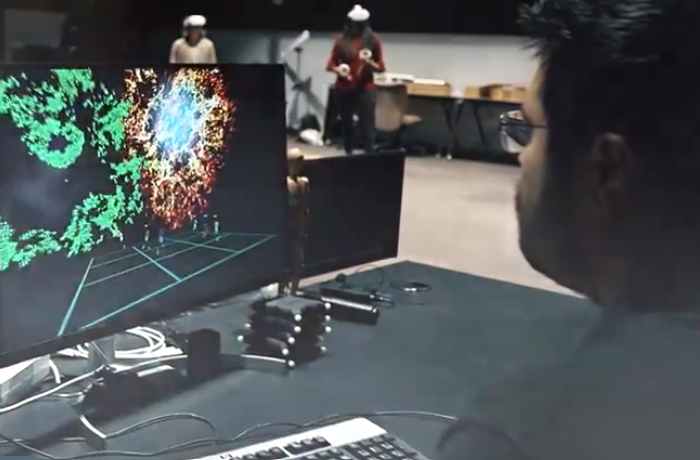It continues to amaze scientist and people all over the world…
NASA’s James Webb Space Telescope (JWST) is rapidly establishing itself as an unprecedented tool for discovering distant supernovae, significantly advancing our understanding of the early universe. The telescope’s state-of-the-art infrared capabilities allow it to detect the light from ancient supernovae, which has been stretched into longer wavelengths due to a phenomenon known as cosmological redshift. This makes Webb particularly adept at spotting these cosmic explosions from a time when the universe was just a fraction of its current age.
Webb’s remarkable sensitivity to infrared light enables it to observe the faint glow of supernovae that exploded billions of years ago, far beyond the reach of previous telescopes. Recently, a team utilizing data from the JWST Advanced Deep Extragalactic Survey (JADES) identified ten times more distant supernovae than were previously known. These discoveries include some of the most distant supernovae ever observed, with a few used to measure the expansion rate of the universe.
James Webb Space Telescope spots asteroid collision in neighboring star system https://t.co/loAwo5jkYm
— JimeV Augmented Mouse (@Jelwoodv) June 11, 2024
Christa DeCoursey, a third-year graduate student at the Steward Observatory and the University of Arizona, highlighted the significance of these findings during a press conference at the 244th meeting of the American Astronomical Society in Madison, Wisconsin. “Webb is a supernova discovery machine,” DeCoursey stated, emphasizing both the quantity of detections and the great distances to these supernovae as the most thrilling outcomes of the survey.
The JADES program has been particularly effective in pushing the boundaries of our cosmic knowledge. Prior to Webb’s launch, the highest redshift at which supernovae had been detected was around 2, corresponding to a universe only 3.3 billion years old, about 25% of its current age. However, the JADES sample includes supernovae that exploded when the universe was less than 2 billion years old, offering a glimpse into the cosmic “teen” or even “pre-teen” years.
To identify these ancient supernovae, researchers compared multiple images taken up to a year apart, looking for sources that either appeared or disappeared, indicative of transient astronomical events like supernovae. This method has uncovered approximately 80 supernovae in a sky area about the size of a grain of rice held at arm’s length.
Astronomie – NASA James #Webb Space Telescope -Update-64:https://t.co/5JdKtPBKAY pic.twitter.com/K0nnzIl0sJ
— Hansjürgen Köhler / CENAP (@CenapKoehler) June 11, 2024
Justin Pierel, a NASA Einstein Fellow at the Space Telescope Science Institute (STScI) in Baltimore, Maryland, emphasized the novelty of these findings. “This is really our first sample of what the high-redshift universe looks like for transient science,” Pierel noted. He and his colleagues at STScI were tasked with differentiating actual supernovae from other similar-looking transients.
Among the noteworthy discoveries is the highest-redshift supernova ever spectroscopically confirmed, with a redshift of 3.6. This supernova’s progenitor star exploded approximately 1.8 billion years after the Big Bang, categorizing it as a core-collapse supernova, which occurs when a massive star exhausts its nuclear fuel and collapses under its own gravity.
Dr. Macarena Garcia Marin speaks to the gathered scientists about the James Webb Space Telescope at the American Astronomical Society annual meeting in Madison, Wisconsin, today. #AAS244 #NASAWebb pic.twitter.com/h7SrZpIgSz
— Space Telescope Science Institute (@SpaceTelescope) June 11, 2024
These discoveries by the Webb Telescope not only extend our visual reach into the distant past but also enhance our understanding of the properties and behaviors of early-universe supernovae. By continuing to analyze these distant explosions, scientists hope to gain deeper insights into the nature of the universe and its development over billions of years, potentially uncovering whether distant supernovae differ fundamentally from those observed in the nearer cosmos.
Key Points :
i. NASA’s James Webb Space Telescope (JWST) has proven highly effective in discovering distant supernovae, thanks to its advanced infrared capabilities which can detect ancient light stretched by cosmological redshift.
ii. A team using data from the JWST Advanced Deep Extragalactic Survey (JADES) identified ten times more distant supernovae than previously known, including some of the most distant examples ever observed.
iii. These discoveries provide insights into supernovae from when the universe was less than 2 billion years old, significantly younger than what was observable before JWST’s launch.
iv. Researchers identify these supernovae by comparing images taken up to a year apart, spotting changes indicating transient events in sections of the sky about the size of a grain of rice held at arm’s length.
v. One significant find includes the highest-redshift supernova ever spectroscopically confirmed, at a redshift of 3.6, which exploded when the universe was only 1.8 billion years old.
Charles William III – Reprinted with permission of Whatfinger News



